The Silent Scroll: How Social Media is Reshaping Teen Mental Health
Explore the complex relationship between social media and teen mental health. Learn practical strategies for maintaining digital wellness in today’s connected world.
Introduction: The Double-Edged Sword in Our Pockets
When I was 15, the most socially anxious moment of my day was walking into the school cafeteria. Today’s teens face a different reality: their cafeteria is perpetual, accessible through the device in their pocket, and the social pressure never ends. This constant connectivity comes at a cost to adolescent mental health—one that we’re only beginning to understand.
The relationship between social media and mental health is complex, nuanced, and desperately important to unpack. As a former educator who has witnessed this transformation firsthand, I’ve seen how the digital landscape has fundamentally altered the teenage experience. This article will explore the multifaceted impact of social platforms on teen mental health, moving beyond simplistic “social media is bad” narratives to provide a balanced, research-backed perspective.
The Digital Landscape: Understanding Today’s Teen Experience
Today’s teenagers are the first generation to navigate adolescence with constant access to social media. According to the Pew Research Center, 95% of teens have access to a smartphone, and 45% say they’re online “almost constantly.” This represents a fundamental shift in how young people develop their identities, form relationships, and understand the world.
This constant connectivity creates unique challenges for mental health. Unlike previous generations, today’s teens rarely experience true solitude or disconnection. The boundaries between school, home, and social life have blurred into a continuous stream of notifications, updates, and social comparisons.
The Psychological Impact: How Social Media Affects Developing Brains
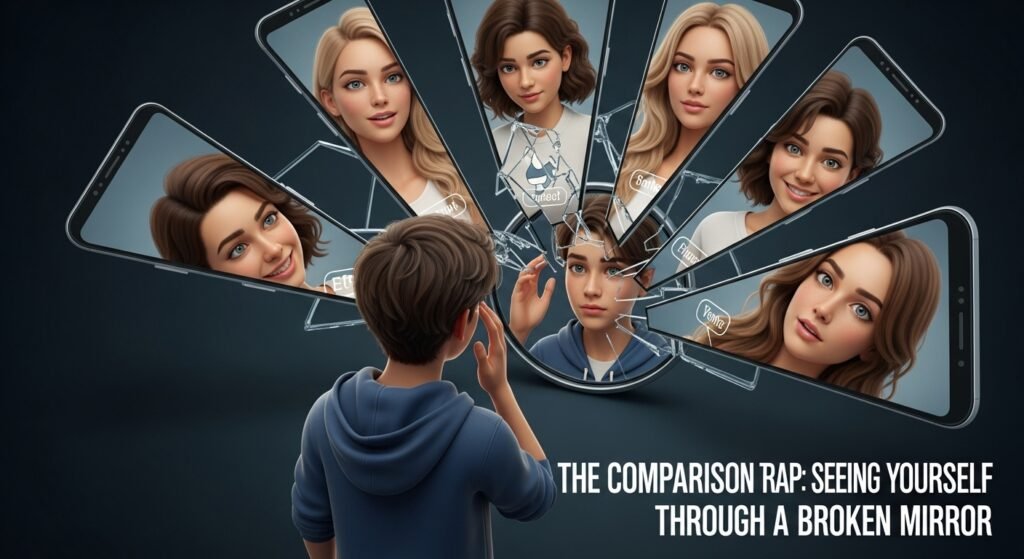
The Comparison Trap and Its Toll on Mental Health
Social media platforms are essentially “highlight reels”—carefully curated collections of everyone’s best moments. For adolescents still developing their self-concept, this creates a distorted reality that can severely impact mental health.
The constant exposure to idealized images and experiences can lead to:
- Diminished self-esteem from unfavorable social comparisons
- Appearance anxiety fueled by filtered and edited images
- Fear of missing out (FOMO) when seeing peers’ social activities
- Identity confusion from pressure to conform to online trends
Research published in the Journal of Social and Clinical Psychology found that limiting social media use to 30 minutes per day significantly reduced loneliness and depression symptoms. This suggests a direct correlation between platform engagement and mental health outcomes.
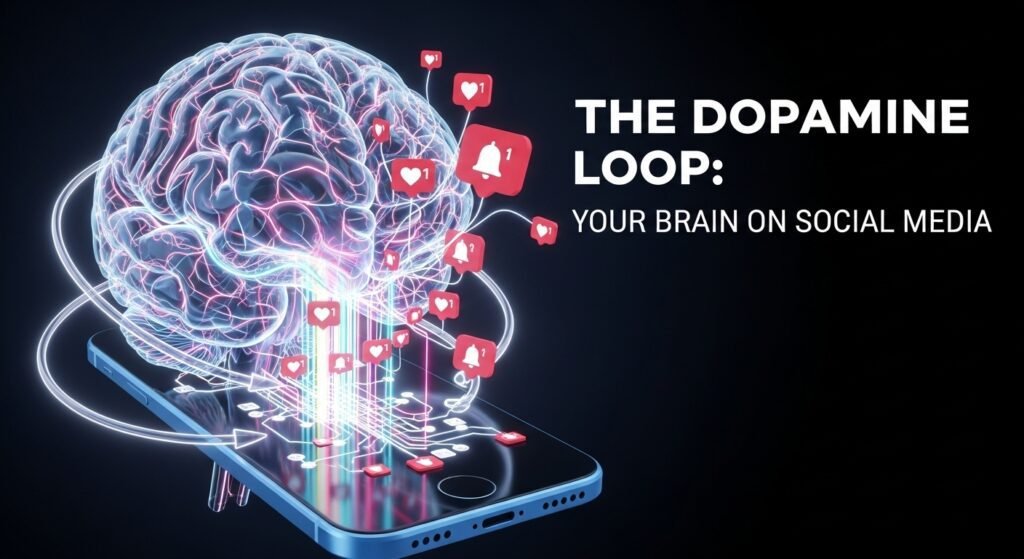
The Dopamine Loop: Addiction and Mental Health
Social media platforms are expertly designed to activate the brain’s reward system. Each like, comment, or share triggers a small dopamine release, creating a reinforcement loop that can become addictive. For developing adolescent brains, this can have significant implications for mental health.
Neuroscience research shows that the adolescent brain is particularly susceptible to these dopamine-driven feedback loops. This can lead to:
- Compulsive checking behaviors that disrupt sleep and study
- Anxiety tied to social validation metrics
- Reduced attention span affecting academic performance
- Interference with natural reward processing
The Specific Mental Health Challenges
Anxiety and Depression: The Statistical Reality
The correlation between social media use and poor mental health outcomes is increasingly supported by research. A study published in JAMA Pediatrics found that for every hour spent on social media, adolescents showed increased symptoms of depression and anxiety.
The statistics paint a concerning picture:
- Teens who spend 5+ hours daily on electronic devices are 71% more likely to have suicide risk factors
- Rates of teen depression and suicide have noticeably increased since 2011, when social media became mobile
- Adolescent girls who are heavy social media users are three times more likely to be depressed than occasional users
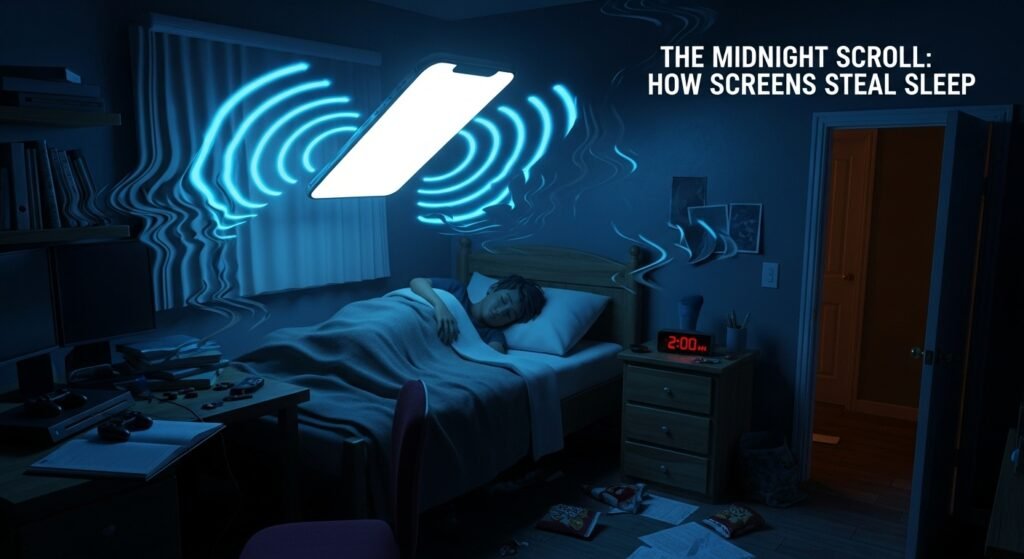
Sleep Disruption: The Foundation of Mental Health
Perhaps the most underestimated impact of social media on teen mental health is its effect on sleep patterns. The blue light from screens suppresses melatonin production, while the engaging content delays bedtime.
The consequences are far-reaching:
- Sleep deprivation exacerbates anxiety and depression symptoms
- Reduced emotional regulation capacity during daytime hours
- Impaired cognitive function affecting academic performance
- Weakened immune system leading to more frequent illness
The National Sleep Foundation recommends that teens get 8-10 hours of sleep nightly, but many are getting significantly less due to late-night scrolling.
Cyberbullying and Its Mental Health Consequences
The digital transformation of bullying has created new challenges for adolescent mental health. Unlike traditional bullying, cyberbullying can be:
- Persistent: 24/7 access means no escape, even at home
- Permanent: Hurtful content can be stored and shared indefinitely
- Hard to notice: Parents and teachers may miss digital harassment
- Amplified: Audience size can be much larger than school-based bullying
According to the Cyberbullying Research Center, approximately 37% of young people between the ages of 12 and 17 have been bullied online, with significant consequences for their mental health.
Not All Bad: The Positive Aspects of Social Media
Despite the concerning trends, social media isn’t universally harmful to teen mental health. When used intentionally, platforms can provide:
- Community connection for isolated or marginalized youth
- Access to information about mental health resources
- Creative expression through content creation
- Social support during difficult times
- Identity exploration in safer digital spaces
The key differentiator seems to be whether teens are passively consuming content or actively engaging in meaningful interactions.
Manage Student Loans with Online Learning Tips
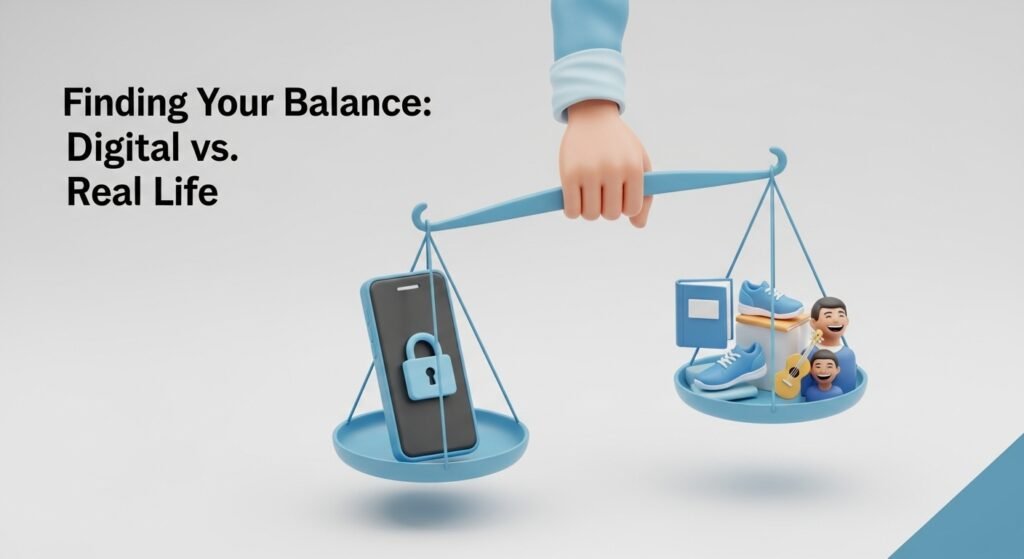
Strategies for Healthier Social Media Use
For Teens: Practical Mental Health Protection
Improving your relationship with social media doesn’t require complete abandonment. These strategies can help protect your mental health:
- Curate your feed:
- Unfollow accounts that trigger negative comparisons
- Follow accounts that promote body positivity and mental wellness
- Use mute features liberally to control your experience
- Implement boundaries:
- Establish phone-free times (meals, homework, before bed)
- Turn off non-essential notifications
- Set app time limits using built-in phone features
- Practice mindful engagement:
- Ask “Why am I opening this app?” before doing so
- Schedule specific times for checking social media
- Balance online interactions with real-world connections
For Parents: Supporting Teen Mental Health
Parents play a crucial role in helping teens navigate social media’s challenges:
- Educate without fearmongering:
- Have open conversations about algorithms and curated content
- Discuss how social media companies profit from attention
- Explain the business models behind “free” platforms
- Model healthy behavior:
- Practice your own phone boundaries
- Engage in device-free family activities
- Talk about your own social media struggles
- Create family agreements:
- Establish charging stations outside bedrooms
- Set reasonable time limits together
- Discuss appropriate sharing and digital citizenship
When to Seek Professional Help for Mental Health Concerns
While some social media-related stress is normal, certain signs indicate that professional support might be needed for mental health:
How to Start Online Tutoring in 2025 — Earn from Home
| Warning Signs | Action Steps |
|---|---|
| Significant changes in sleep or eating patterns | Consult with a pediatrician or mental health professional |
| Withdrawal from offline friendships and activities | Schedule a mental health screening |
| Sharp decline in academic performance | Explore school mental health resources |
| Expressing feelings of worthlessness or hopelessness | Contact crisis services if needed |
| Talking about self-harm or suicide | Immediately seek emergency mental health services |
Resources like the National Alliance on Mental Illness (NAMI) and Crisis Text Line provide valuable support for teens struggling with their mental health.
The Role of Schools in Supporting Digital Mental Health
Educational institutions have a responsibility to address social media’s impact on student mental health:
- Implement digital literacy curricula that include mental health components
- Provide resources for students struggling with social media-related issues
- Train staff to recognize signs of digital distress
- Create phone policies that balance access with protection
- Normalize conversations about digital wellness and mental health
Looking Ahead: The Future of Social Media and Mental Health
As we move forward, several developments could reshape the relationship between social media and teen mental health:
- Platform accountability: Growing pressure for social media companies to prioritize user wellbeing over engagement metrics
- Digital wellness tools: Increased integration of well-being features within platforms themselves
- Improved digital literacy: Better education for young users about how to protect their mental health online
- Mental health integration: More platforms incorporating mental health resources directly into their interfaces
Conclusion
The relationship between social media and teen mental health isn’t predetermined—it’s being written daily through our choices, conversations, and policies. While platforms present real challenges to adolescent mental health, they also offer unprecedented opportunities for connection, creativity, and support.
The goal shouldn’t be to eliminate social media from teens’ lives, but to help them develop the critical skills needed to use these tools in ways that support rather than undermine their mental health. This requires ongoing conversation, continued research, and collective responsibility across families, schools, and tech companies.
By approaching social media with intention, awareness, and healthy boundaries, we can help the next generation navigate these digital spaces in ways that protect their mental health while still enjoying the benefits of connection.

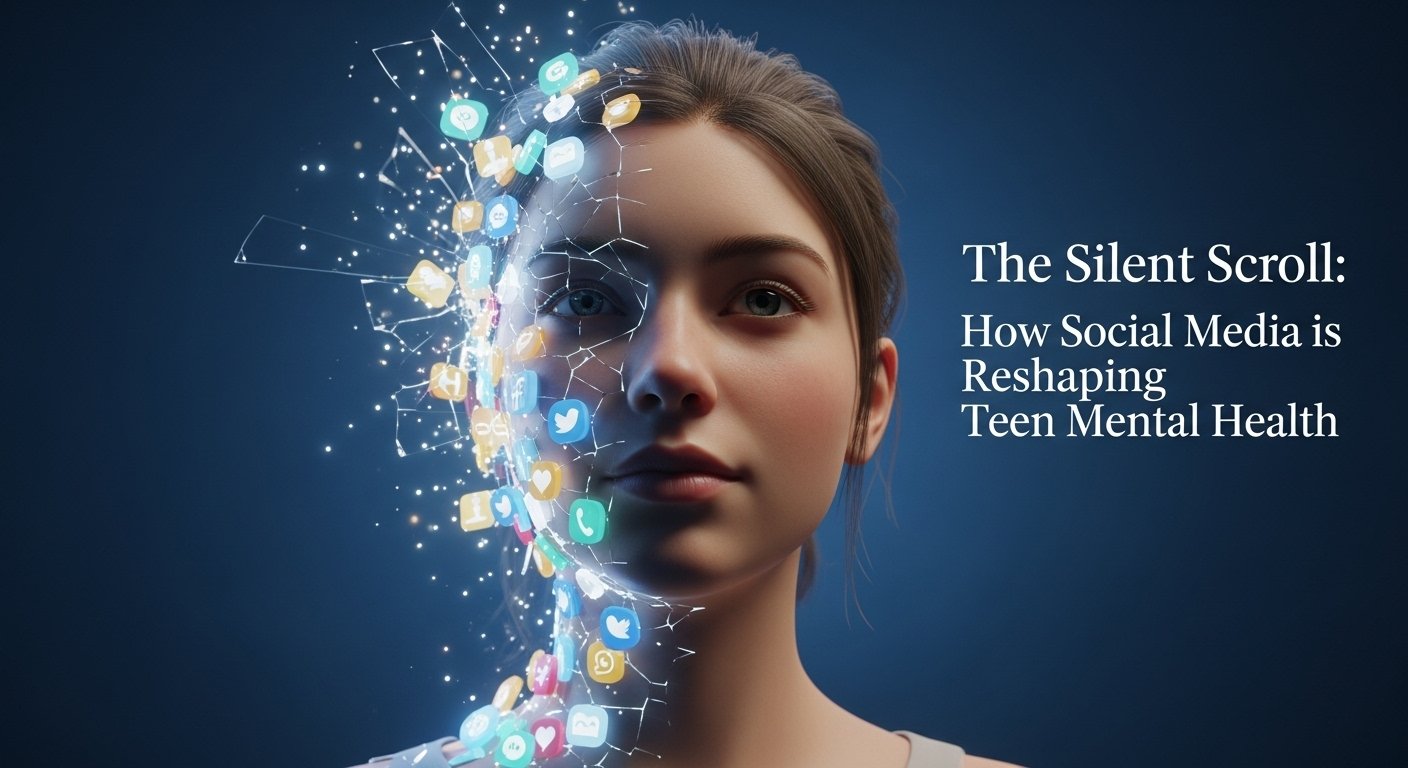


Pingback: Top Mental Health Resources for College Students - PaidScripts -Tech Education Hub: Courses & Student Resources
Pingback: AI Transforming Education Trends in 2025